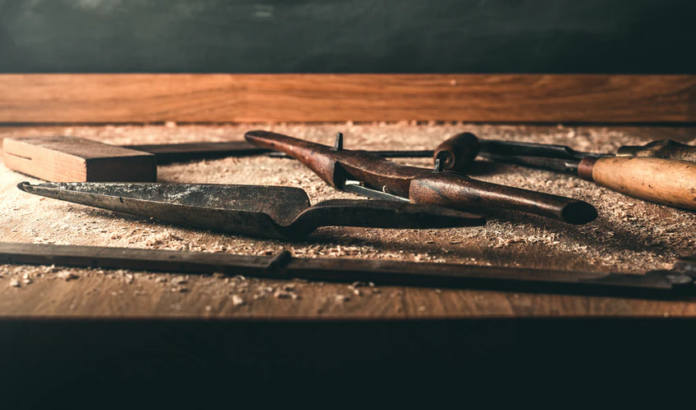Between the whirring of a circular saw, the flecks of wood powdering every surface, and the oil-stained rags littering your workstation, it can be easy for a carpenter’s senses to get overwhelmed and to leave room for error. There are however many simple steps you can take in order to avoid some of the most common mistakes woodworkers make, and we’ll lay it all out for you in this article.
Choose the Correct Tools
There are some jobs that require a special tool, and there are some jobs where you can substitute a tool for another by making a few adjustments. Knowing the difference between the two is a skill that will develop over time.
Just like any area of expertise, knowledge is gold. Try to find a reliable source of information, like the woodwork gurus over at Woodwork Mag. Most of your questions about tools have a simple answer that will guide you toward your local carpentry shop, or to your own workstation. At some point, every carpenter has to decide if it’s worth it to buy a specialty tool that will get used once. Whatever you do, don’t invest too much time into a project if you don’t have all the right tools because it may not turn out right.
Practice Safety
It’s expected that once you’ve been working with wood for a while, your tools will become like old familiar friends, and you might forget the dangers of such sharp and powerful objects and chemicals. Always put safety first to avoid serious hazards.
Gear
One way you can avoid injury is by wearing protective gear. Eyeglasses, headgear, and thick gloves will help you avoid deep lacerations or getting dust in your eyes that could potentially cause scratches.
Rag Disposal
Properly disposing of rags soaked with finishing chemicals is imperative. Since most finishes and stains work through oxidation, and since oxidation produces heat, these chemicals are highly flammable. If you chuck them in the garbage after, you risk setting fire to your work area. Hang the rags to dry after using them, and be sure not to throw them in the trash until they are completely dry.
Don’t Forget the Kerf
If you’ve ever cut a slab of wood just to find after that it came out too short even though you measured it with precision, then you probably forgot to take into account the thickness of the kerf. Every blade has a certain thickness, and you have to take that into consideration when measuring.
A simple solution to this problem is making a partial cut in scrap wood, and then using that when you pencil in your measurement marks.
Clean Before Finishing
Carpentry is definitely a dusty endeavor that’s sprinkled with sawdust, chemicals, screws, and more. We get it. It’s a dirty job—but if you want a clean finish, then make sure you tidy up before you start. If you’ve got dust and debris on all surfaces and lingering in the air, then you can be certain it will settle and stick to your finish. This will tarnish the beauty and quality of your creation.
Sharpen Up
Dull tools can be a safety hazard, as they’re likely to kick and tear out. Not only that but they tend to burn wood due to how quickly they heat up. Keep your blades sharpened up with a few at-home hacks, or replace the blade. Replacement can get expensive, so it’s always a good call to try your hand at sharpening them yourself first. If your tools are sharp, it will damage the material and slow you down in the end, so don’t ever try to force the blade.
Monitor Moisture
Being a natural material, wood can expand and contract depending on how much moisture is in its environment and how the temperature varies. It’s ideal to have a moisture meter so you can estimate how much it will expand, if at all. But if you don’t have one, give your work 48 hours to adjust to its environment.
Handle with Care
It’s not glass or porcelain, but wood should still be handled with care. Your work will turn out as nice as you treat it. Chairs and tables should be handled with more care than you might use to hammer together a birdhouse. Also, be mindful of what you set on top of your work. Saws, hammers, or chemicals could irreversibly damage your work.
If you avoid these common rookie mistakes when you’re whipping up your next masterpieces, then it will result in pieces with more integrity and value. Remember that all your work will come out as fine as it was handled during its creation.



















